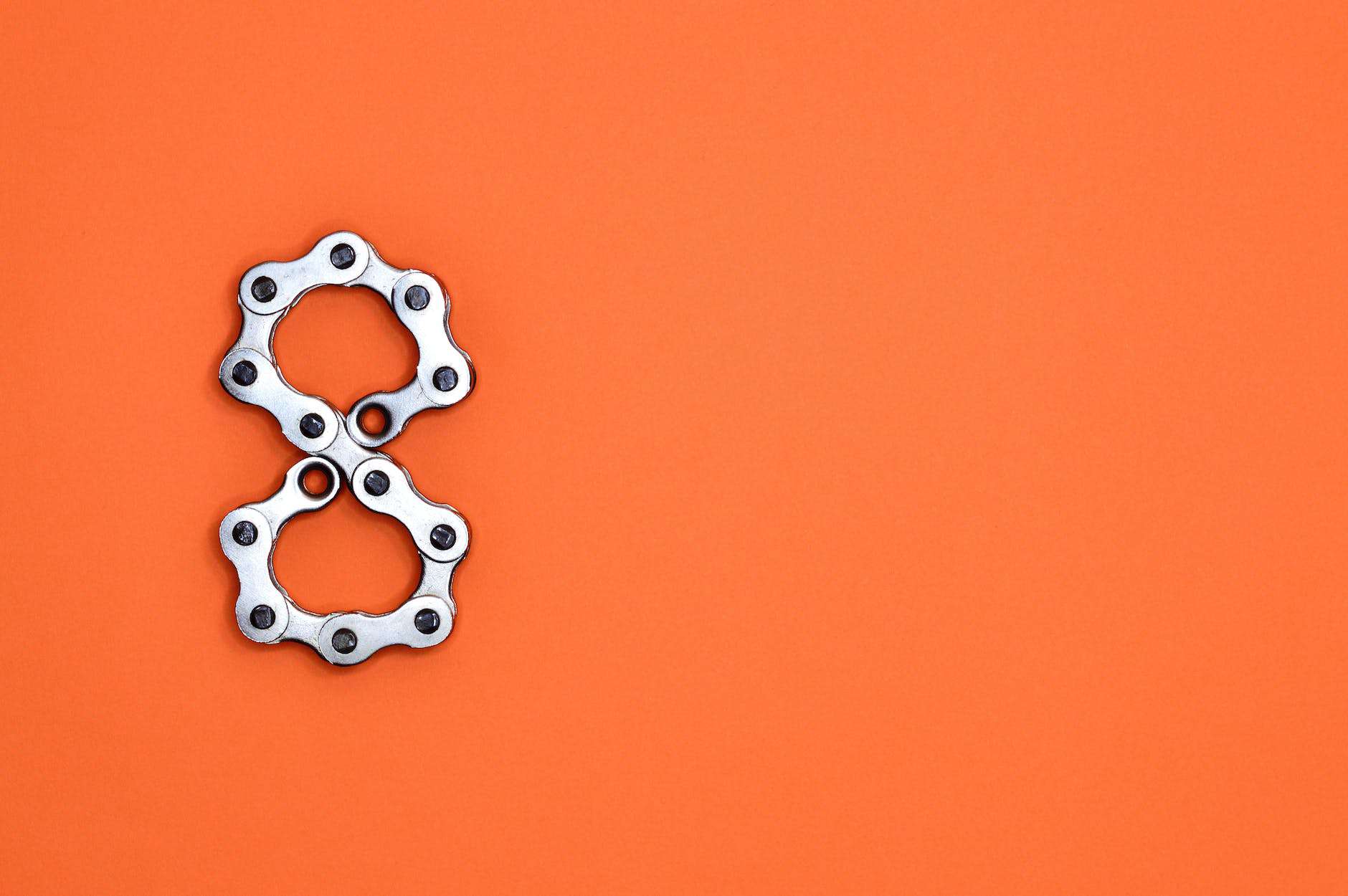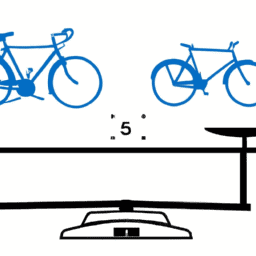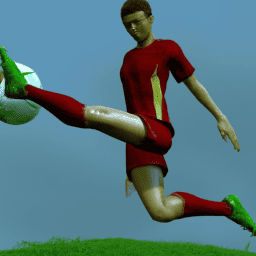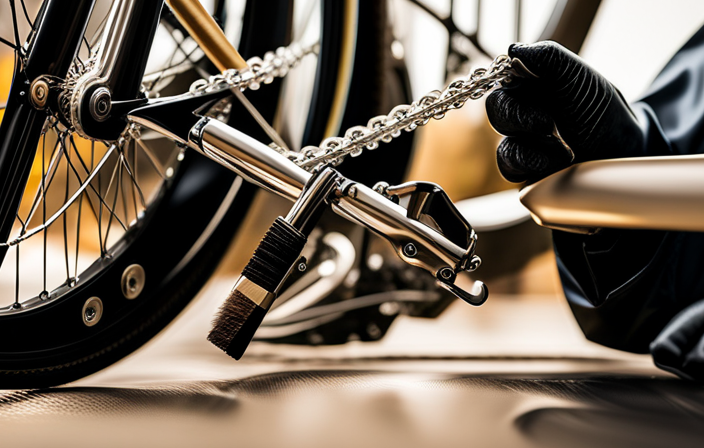Slipping of the bicycle chain can be an extremely aggravating issue for cyclists. It not only complicates the act of pedaling but also poses a risk of causing significant harm to your bicycle.
So, what are the most common causes of bicycle chain slippage? This blog post will delve into the top five causes and discuss how you can fix them. From worn-out chainring teeth to not tightening the nuts and bolts, we will walk you through each step to get your bicycle running smoothly again. Let’s get started!

Why Bicycle Chain Slips
If you are experiencing chain slip, you will need to do some checks and adjust your bike. You might need to adjust the tension of the cables, change drivetrain components, or check the wear on chain rings and sprockets.
1. Worn Out Chainring Teeth
Bicycle chain slippage is a common issue that can lead to problems with the bike. If your chain is not tightened enough, it can slip on the teeth on the chainring and cause damage. Chain slippage can also occur if the bicycle chain is too loose or if it’s not appropriately lubricated. In this section, we will discuss why chainrings may become worn out and how you can fix them. We will also give you tips on keeping your bicycle Chain from slipping, as well as suggestions for lubricating and replacing parts in case of wear and tear. Finally, we will explain why regular maintenance is so important for your bike’s long-term health.
Why Are Chainrings Worn Out?
As chains wear down over time, they begin to suffer from a number of issues that can lead to chainring failure. One of the most common causes of chainring wear is when the teeth become worn out. Over time, these sharp teeth create friction against the inner surface of the chainlink, which causes it to slip.
As the chain slips more and more, it becomes harder and harder for your bike to stay in gear.
How Can I Spot When My Chain Is Worn Out?
If you’re noticing that your bike isn’t staying in gear as easily as it once did, there might be a problem with your chainrings. To check whether or not your ring has become worn out, take a look at its teeth – if they’re jagged or uneven in any way, then you likely have a problem that needs to be fixed ASAP!
Suppose you don’t have access to a toolkit or know how to do basic repairs yourself (such as replacing bearings). In that case, you should definitely bring your bike into an authorized dealer or mechanic for inspection and repair work.
How Often Should I Replace My Chainrings?
It’s important to note that replacement chains are usually recommended every 500 miles or every two years – whichever comes first (although this recommendation may change based on rider weight/activity level).
This means that unless something catastrophic happens (e.g., your wheel falls off!), you won’t need to replace them very often – provided that you’re doing regular maintenance on them! This includes checking for and fixing any signs of wear and tear before they cause any major problems – such as lost traction or loss of power while riding! In addition to checking for wear & tear regularly – which includes looking for jagged/uneven teeth -.
2. Bent Links In The Chain
Bicycles are a great mode of transportation, but they can also be quite dangerous if not maintained properly. Chain Slip is the number one cause of bicycle accidents, and it’s easy to prevent. This section will discuss the common causes of chain slip and how you can fix them.
Regarding bicycles, there are three main parts: the frame, the drivetrain (the chain and gears), and the wheels. The frame is what holds everything together while you’re riding, and it needs to be strong enough to support your weight while you’re pedaling.
The drivetrain consists of the chain and gears, which power the wheels. If any part of these components is damaged or worn down, it will cause your bike to slip on the ground.
One of the most common causes of chain slip is bent links. This happens when one or more links in the chain are bent out of shape so that they no longer fit properly into their housing on either side of the gearbox (or hub).
When this happens, your bike will slip even when there’s nothing wrong with its other components. To prevent this from happening, make sure that all your links are tight and in good condition by checking for bends regularly.
If you find a bent link on your chain, don’t panic – there’s usually a way to fix it without replacing your entire drivetrain!
Another cause of chain slip is worn on either side of the gearbox (or hub). This wear occurs when dirt, sand, or other material gets stuck between these two surfaces and causes friction as you pedal. Over time this wear can cause one side of the gearbox (or hub) to become loose – just like a worn belt in an engine – which then affects how well your bike rides and slips on slippery surfaces.
To avoid excessive wear and tear on your drivetrain, take care not to hit anything hard with your bike while biking or else that material will fly into places it doesn’t belong! Additionally, make sure that you clean off all those mudflaps!
If you experience problems with slipping or losing grip on your bicycle during rides – no matter what caused them – consult an expert to help fix them quickly! With proper maintenance now along with using our Chain Breaking Tool when needed, cyclists can enjoy years-long trouble-free cycling experiences!
Proper lubrication also plays a vital role in keeping chains healthy for extended use – so be sure to keep some bearing grease handy at all times!
3. Not Tightening The Nuts & Bolts
If you’re like most cyclists, you probably take great pride in your bike. Riding your bike is a fun and healthy way to get around town, and your bike must stay in good condition so that you can continue enjoying it. One of the main factors that can affect the performance of your bike is chain slippage.
Chain slippage is when the chain falls off of the sprocket or derailleur, causing decreased power and efficiency. Chain slippage can be caused by various things, but the most common causes are improper tightening of nuts and bolts on the bike chain or incorrect lubrication.
To prevent chain slippage from happening in the first place, make sure to properly tighten all of the nuts and bolts on your bike chain. Additionally, make sure to lubricate the chain regularly with a quality cycling lubricant – this will help reduce friction and keep your bike running smoothly.
If you experience chain slippage, do not hesitate to contact an authorized dealer or mechanic for assistance. They will be able to diagnose the problem and give you instructions on how to correct it.
In addition, always inspect the derailleur and sprockets for damage or wear and adjust the chain tension as needed to optimize performance. Finally, regularly check for loose nuts and bolts on your bike chain and replace them if necessary to maintain optimal performance.
Check for Missing Bushings
If your cycling chain slips, it could be a simple matter of missing bushings. To test, place the chain between two chains rings and use a ruler to measure the wear.
You can also look at the hanger. If it is bent forward or backward, it will cause the wheel to wobble. It could even be bent so that the chain can slip.
Next, check the cassette. This is an important component and should be properly indexed. You may need to replace this component if it starts to slip.
Chains are generally made up of three components: the outer plate, the inner plate, and the bushing. All of these parts are designed to work together in a tight system. They are subject to damage from several sources, including vibration, heat, and oil contamination.
Skipping chain is one of the most common mechanical problems. Broken teeth, loose hubs, worn cassettes, and loose freehubs can cause skipping. The easiest solution is to reset the tension of the cable.
Adjust Tension for Cables that Are Stretched Out
If you are struggling to keep your chain in the right gear, you might want to consider adjusting the tension of your shifting cables. This is not an impossible task and doesn’t take much time to perform.
First, measure the length of the chain. You can do this with a ruler or calipers. Make sure you are looking at your chain on a flat surface. When you are finished, you should have a pretty good idea of how much tension you should be adjusting.
The most common cause of skipping is a strained or stretched cable. Newer bikes are prone to this, but older ones can also suffer from this affliction. Poor shifting can be caused by cables that have not been replaced or tightened properly.
There are many ways to adjust tension on your shifting cables. The best option is to replace your housing around the shift cables. A bent cap or housing can wreak havoc on the shifting process.
Inspect Chainrings and Sprockets for Wear
You should inspect the chain and chainrings of your bicycle for wear before you ride it. It can cause damage to other parts of the drivetrain if it is worn. This can lead to expensive repairs. The more often you check your bike’s chains and rings, the more you can prevent damage.
Chains and chainrings wear at different rates. Chains with more teeth and larger chains wear quicker than smaller rings and chains. As the chain ages, it will wear unevenly.
Wear is caused by unequal force distribution on teeth on chainrings and sprockets. Chains will also wear if they are used under extreme loads. If a rider pedals at high speeds, it can cause damage to the chain.
A good rule of thumb is to replace your chain when it is 0.75% longer. Depending on your cycling conditions, you may need to check it more often.
Change Drivetrain Components
If you want to keep your drivetrain in top shape, it’s important to change drivetrain components when needed. A well-maintained chain can make riding a bicycle more enjoyable. It can also save you money over the long-term.
Many things can cause skipping gears and chain skippage. Often, the easiest solution is to adjust the shifting cable tension. However, this can be a bit tricky.
Chains and shift cables wear down over time. This causes friction in the drivetrain. Also, the teeth on the cassette and cogs can become worn. These worn teeth can cause the chain’s position to shift if they cannot grip it.
Misalignment or improper installation can also cause chain wear. Incorrectly inserting the hub into the through-axle can often cause misalignment.
If you aren’t a professional bike mechanic, it can be hard to figure out what’s wrong. Thankfully, there are a few easy steps to take to diagnose the issue. To begin, inspect the parts to make sure they are in good condition.









